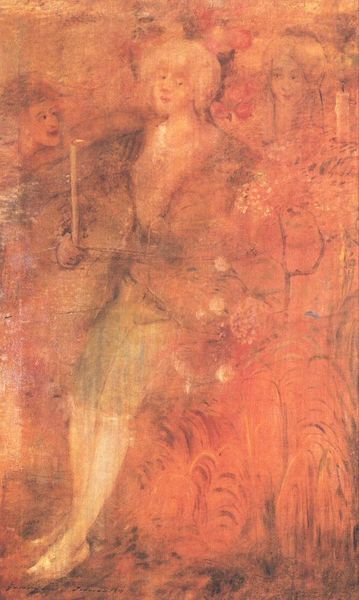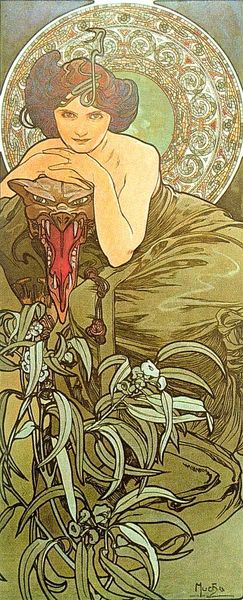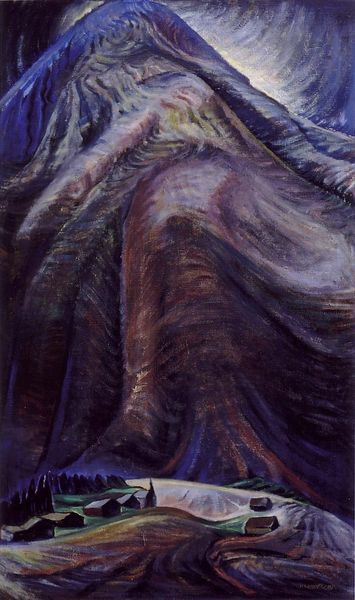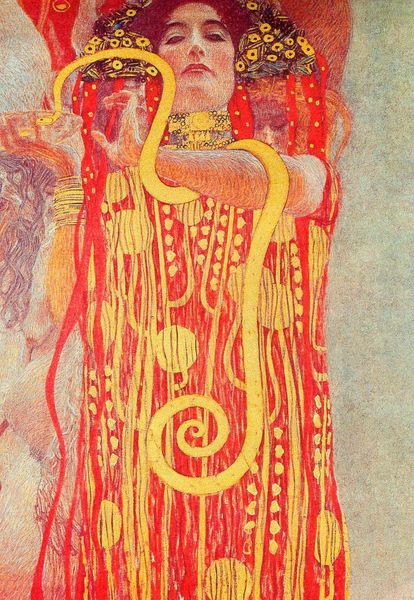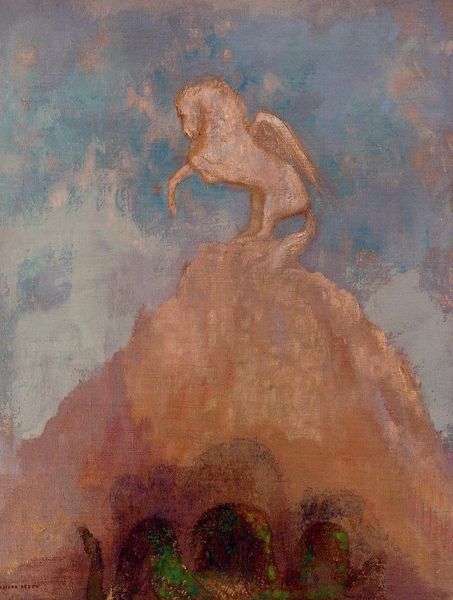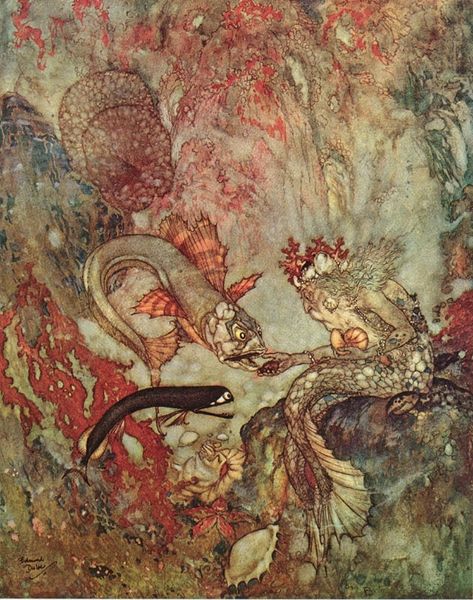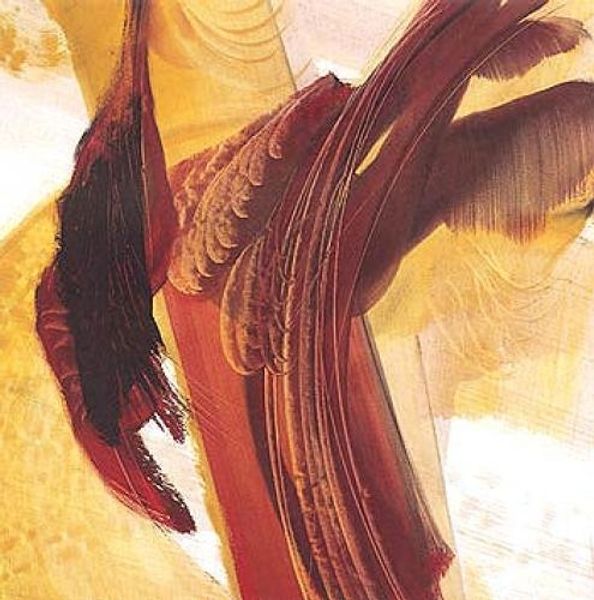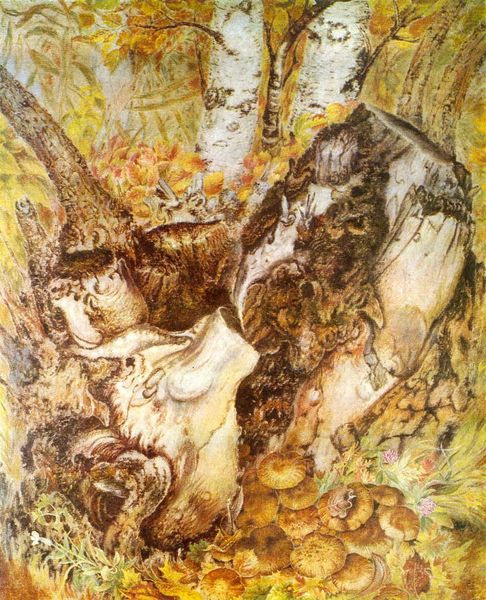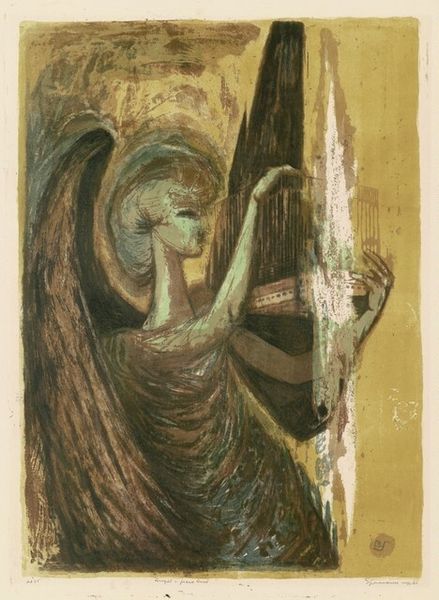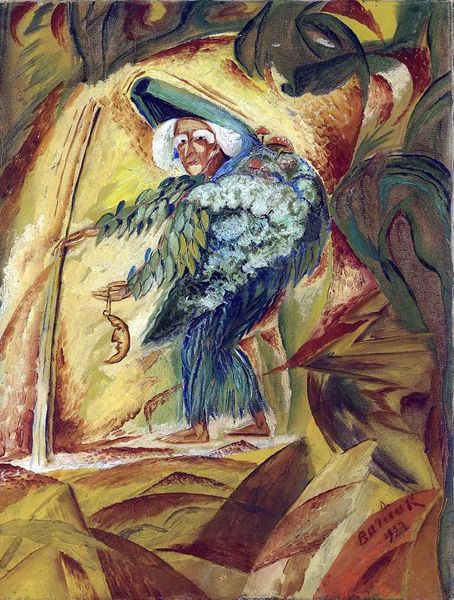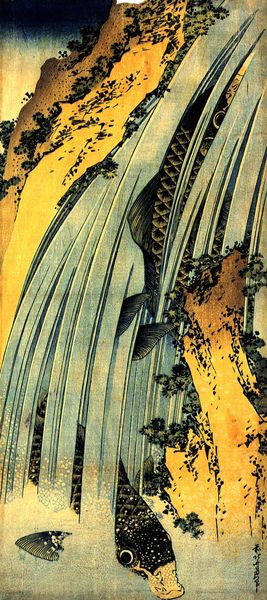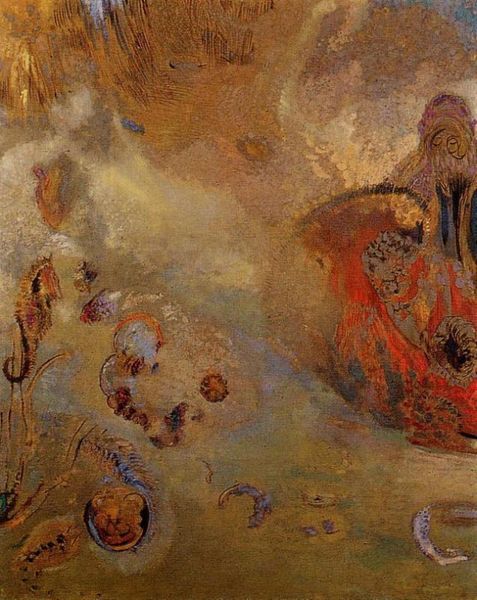
tempera, painting
#
tempera
#
painting
#
landscape
#
fantasy-art
#
figuration
#
naive art
#
mythology
#
symbolism
Dimensions: 240.03 x 80.01 cm
Copyright: Public domain
Editor: This is "Pegasus," a tempera painting from 1905 by Odilon Redon. I’m really drawn to the dreamlike quality and the sort of ethereal palette, and I think there’s a slightly awkward tenderness to the horse and rider… How would you interpret this work? Art Historian: The so-called "awkwardness" is incredibly telling. Redon’s “Pegasus”, at the beginning of the 20th century, flies against dominant narratives of heroism and masculine power. This wasn’t a time of purely aesthetic concerns – artists grappled with rapidly shifting social landscapes, with emerging feminist movements challenging established hierarchies. What happens when the mythical symbol of virility is now approached from a lens of critical deconstruction? Editor: I never thought about it that way. Is that why the wings appear so… heavy? They almost seem to weigh down the figures instead of lifting them. Art Historian: Precisely. Consider the Symbolist movement's focus on inner experience versus outward reality. How might Redon be using mythology, a traditionally external framework, to explore internal anxieties surrounding power, masculinity, and even the potential for failure? Notice how the land itself seems to push them higher but has an odd composition: a field of what could be disembodied eyes, all staring up at Pegasus and the rider… Editor: They DO look like eyes! That is kind of unsettling. So, are you saying that the "failure" might be a purposeful critique of outdated ideas about heroes? Art Historian: It's not a simple rejection, but certainly a complex engagement. The heavy wings, those staring eyes… They become visual metaphors for the burdens of tradition, of societal expectations. Perhaps the rider, no longer a conquering hero, represents a more vulnerable, introspective individual. Does knowing this perspective impact your perception of Redon’s artistic choices? Editor: It totally changes the mood. It is not about fantasy; Redon explores deeper concerns, relating the imagery to gender expectations of the time, which can be translated even to the present day! Thank you. Art Historian: My pleasure. Looking closely helps uncover the social, the personal, and sometimes the revolutionary ideas hidden within art.
Comments
No comments
Be the first to comment and join the conversation on the ultimate creative platform.
